Before Stonehenge
The earliest structures known in the immediate area are four or five pits, three of which appear to have held large pine ‘totem-pole like’ posts erected in the Mesolithic period, between 8500 and 7000 BC.[1] It is not known how these posts relate to the later monument of Stonehenge.
At this time, when much of the rest of southern England was largely covered by woodland, the chalk downland in the area of Stonehenge may have been an unusually open landscape.[2] It is possible that this is why it became the site of an early Neolithic monument complex.
This complex included the causewayed enclosure at Robin Hood’s Ball, two cursus monuments or rectangular earthworks (the Greater, or Stonehenge, and Lesser Cursus), and several long barrows, all dating from the centuries around 3500 BC. The presence of these monuments probably influenced the later location of Stonehenge.
Explore the Stonehenge landscapeThe Earliest Monument
It is possible that features such as the Heel Stone and the low mound known as the North Barrow were early components of Stonehenge,[3] but the earliest known major event was the construction of a circular ditch with an inner and outer bank, built about 3000 BC. This enclosed an area about 100 metres in diameter, and had two entrances. It was an early form of henge monument.[4]
Within the bank and ditch were possibly some timber structures and set just inside the bank were 56 pits, known as the Aubrey Holes. There has been much debate about what stood in these holes: the consensus for many years has been that they held upright timber posts, but recently the idea has re-emerged that some of them may have held stones.[5]
Within and around the Aubrey Holes, and also in the ditch, people buried cremations. About 64 cremations have been found, and perhaps as many as 150 individuals were originally buried at Stonehenge, making it the largest late Neolithic cemetery in the British Isles.[6]
Download a plan of StonehengeThe Stone Settings
In about 2500 BC the stones were set up in the centre of the monument. Two types of stone are used at Stonehenge – the larger sarsens and the smaller ‘bluestones’. The sarsens were erected in two concentric arrangements – an inner horseshoe and an outer circle – and the bluestones were set up between them in a double arc.[7]
Probably at the same time that the stones were being set up in the centre of the monument, the sarsens close to the entrance were raised, together with the four Station Stones on the periphery.
About 200 or 300 years later the central bluestones were rearranged to form a circle and inner oval (which was again later altered to form a horseshoe). The earthwork Avenue was also built at this time, connecting Stonehenge with the river Avon.
One of the last prehistoric activities at Stonehenge was the digging around the stone settings of two rings of concentric pits, the so-called Y and Z holes, radiocarbon dated by antlers within them to between 1800 and 1500 BC. They may have been intended for a rearrangement of the stones that was never completed.[8]
After Stonehenge was built
The stone settings at Stonehenge were built at a time of great change in prehistory, just as new styles of ‘Beaker’ pottery and the knowledge of metalworking, together with a transition to the burial of individuals with grave goods, were arriving from the Continent. From about 2400 BC, well-furnished Beaker graves such as that of the Amesbury Archer[9] are found nearby.
In the early Bronze Age, one of the greatest concentrations of round barrows in Britain was built in the area around Stonehenge. Many barrow groups appear to have been deliberately located on hilltops visible from Stonehenge itself, such as those on King Barrow Ridge and the particularly rich burials at the Normanton Down cemetery.
Four of the sarsens at Stonehenge were adorned with hundreds of carvings depicting axe-heads and a few daggers. They appear to be bronze axes of the Arreton Down type, dating from about 1750–1500 BC. Perhaps these axes were a symbol of power or status within early Bronze Age society, or were related in some way to nearby round barrow burials.[10]
more about Stonehenge’s ConnectionsLater History
From the middle Bronze Age, less communal effort went into the construction of ceremonial monuments such as Stonehenge and more on activities such as the creation of fields.[11]
In the Iron Age, probably about 700 BC, a major hillfort later known as Vespasian’s Camp was constructed 1¼ miles east of Stonehenge overlooking the river Avon.[12] Stonehenge appears to have been frequently visited in the Roman period (from AD 43), since many Roman objects have been found there.[13] Recent excavations raised the possibility that it was a place of ritual importance to Romano-British people.[14]
The small town of Amesbury is likely to have been established around the 6th century AD at a crossing point over the Avon. A decapitated man, possibly a criminal, was buried at Stonehenge in the Saxon period.[15] From this time on, sheep husbandry dominated the open downland around Stonehenge.[16] The earliest surviving written references to Stonehenge date from the medieval period, and from the 14th century onwards there are increasing references to Stonehenge and drawings and paintings of it.
more about research on StonehengeStonehenge in the 20th and 21st Centuries
Since 1897, when the Ministry of Defence bought a vast tract of land on Salisbury Plain for army training exercises, the activities of the military have had an impact on the area. Barracks, firing ranges, field hospitals, airfields and light railways were established.[17] Some of these, such as the First World War Stonehenge airfield, have long since been demolished, but others, such as the Larkhill airfield sheds, still stand and are important in the history of early military aviation.[18]
Meanwhile, the introduction of turnpike roads and the railway to Salisbury brought many more visitors to Stonehenge. From the 1880s, various stones had been propped up with timber poles, but concern for the safety of visitors grew when an outer sarsen upright and its lintel fell in 1900. The then owner, Sir Edmund Antrobus, with the help of the Society of Antiquaries, organised the re-erection of the leaning tallest trilithon in 1901.
Find out more about the WWI AerodromeThis was the start of a sequence of campaigns to conserve and restore Stonehenge – the last stones were consolidated in 1964.[19]
The monument remained in private ownership until 1918 when Cecil Chubb, a local man who had purchased Stonehenge from the Atrobus family at an auction three years previously, gave it to the nation.[20] Thereafter, the duty to conserve the monument fell to the state, today a role performed on its behalf by English Heritage.
From 1927, the National Trust began to acquire the land around Stonehenge to preserve it and restore it to grassland. Large areas of the Stonehenge landscape are now in their ownership. More recent improvements to the landscape – including the removal of the old visitor facilities and the closure of the section of the old A344 that ran close to the stones – have begun the process of returning Stonehenge to an open grassland setting, but there is more that can be done. English Heritage welcomes government plans to invest in a tunnel, which would remove much of the busy A303 and help reconnect the monument to its ancient landscape.
By Susan Greaney
Read more about Stonehenge
-
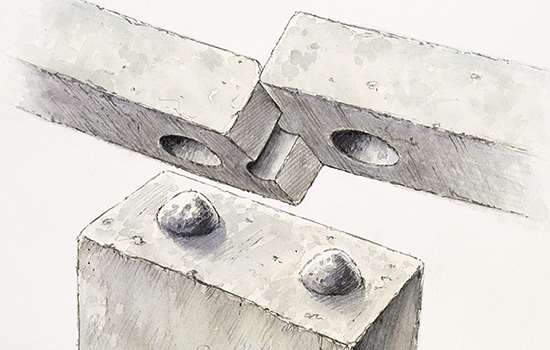
Building Stonehenge
Stonehenge is a masterpiece of engineering. How did Neolithic people build it using only the simple tools and technologies available to them?
-
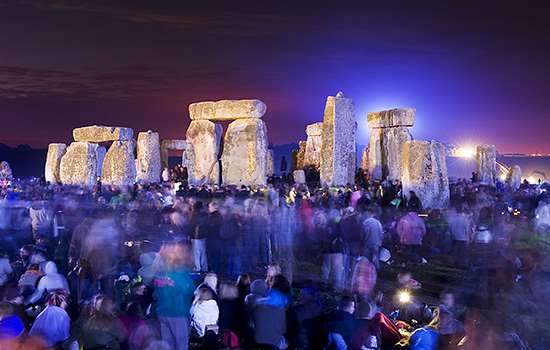
Why Does Stonehenge Matter?
Stonehenge is a unique prehistoric monument, lying at the centre of an outstandingly rich archaeological landscape. It is an extraordinary source for the study of prehistory.
-
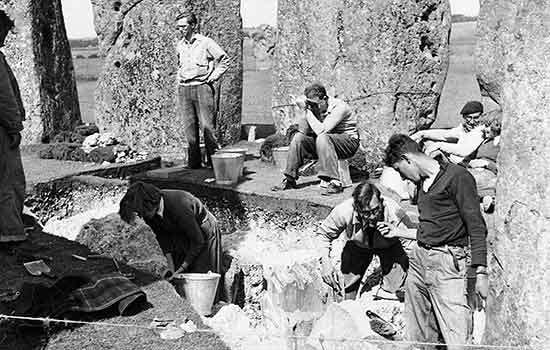
Research on Stonehenge
Our understanding of Stonehenge is constantly changing as excavations and modern scientific techniques yield more information. Read a summary of both past and recent research.
-
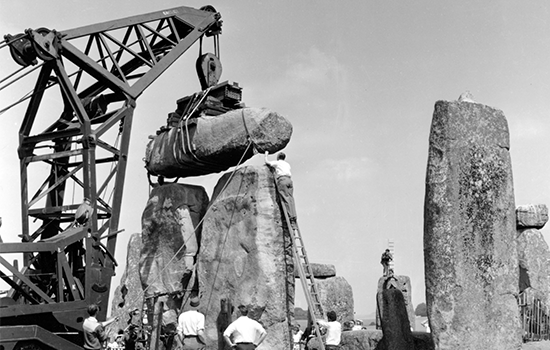
Restoration to Conservation
Since coming into the care of the Ministry of Works in 1918, Stonehenge has had several phases of work to protect it. Find out more about the conservation work undertaken by English Heritage.
-
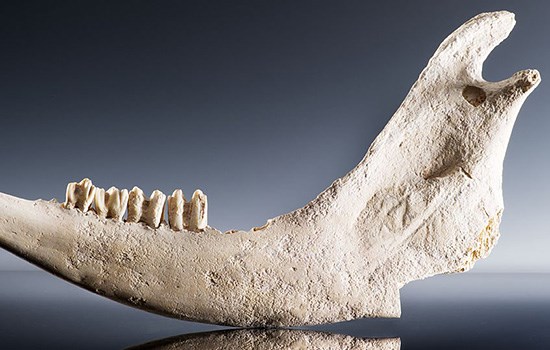
Stonehenge Collection Highlights
Hundreds of prehistoric objects from the Stonehenge World Heritage Site are on display at the visitor centre. You can explore ten of them here in detail.
-
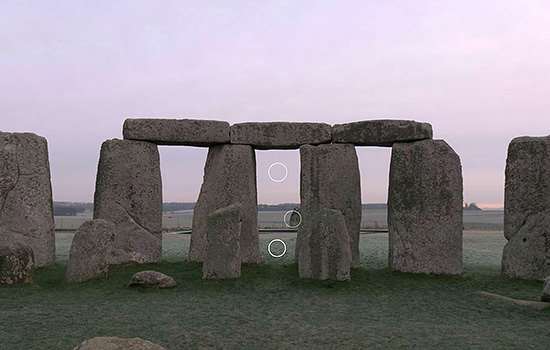
Virtual Tour of Stonehenge
Take an interactive tour of Stonehenge with this 360 degree view from inside the stones, which explores the monument’s key features.
-
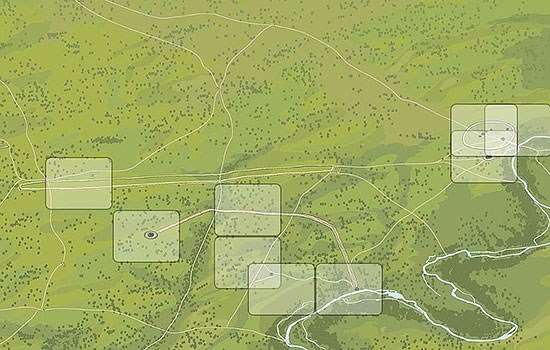
Explore the Stonehenge Landscape
Use these interactive images to discover what the landscape around Stonehenge has looked like from before the monument was built to the present day.
-
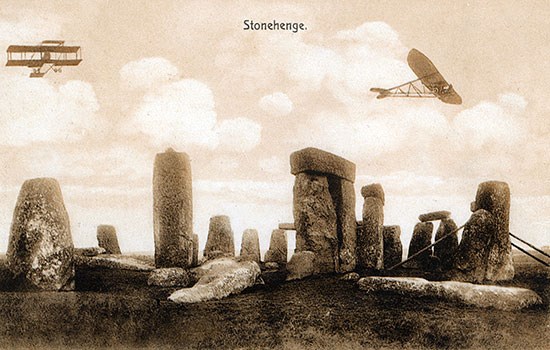
The First World War Stonehenge aerodrome
As they travel from the visitor centre to the stones, few of today’s visitors to Stonehenge realise they are crossing the site of a First World War airfield. Find out more.
-
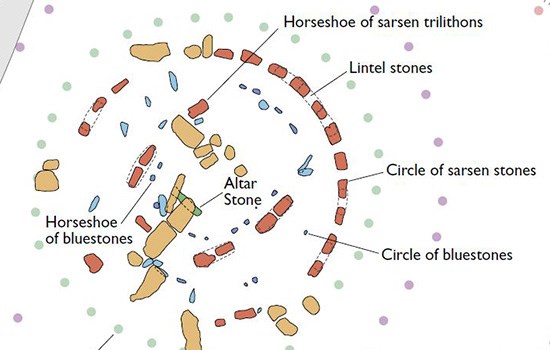
Plan of Stonehenge
Download this PDF plan to see the phases of the building of Stonehenge, from the first earthwork to the arrangement of the bluestones.
-
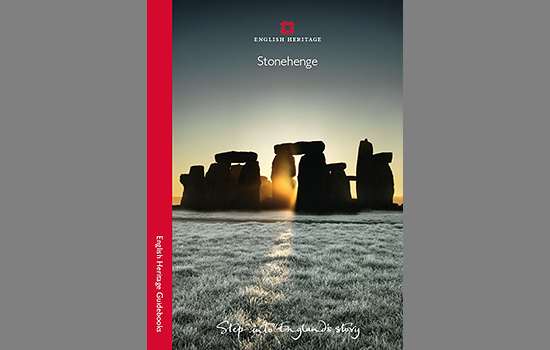
Buy the guidebook
The guidebook includes a tour and history of the site and its remarkable landscape, with many reconstruction drawings, historic images, maps and plans.
-

More histories
Delve into our history pages to discover more about our sites, how they have changed over time, and who made them what they are today.
Footnotes

